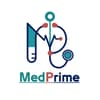L4 QS, BMS201 Past Paper (PDF)
Document Details

Uploaded by MedPrime
New Mansoura University
Tags
Summary
This document contains multiple choice questions (MCQs) on RBC Destruction & Hemoglobin Catabolism. The document includes questions about the average lifespan of a red blood cell, locations of RBC destruction, the fate of globin after hemoglobin breakdown, enzymes in heme degradation, and bilirubin forms. It covers various medical topics related to human health.
Full Transcript
MCQs on RBC Destruction & Hemoglobin Catabolism 1. What is the average lifespan of a red blood cell (RBC)? a) 60 days b) 90 days c) 120 days d) 150 days 2. Where does the majority of RBC destruction occur? a) Liver b) Spleen c) Bone marrow d) All of the above 3. What is...
MCQs on RBC Destruction & Hemoglobin Catabolism 1. What is the average lifespan of a red blood cell (RBC)? a) 60 days b) 90 days c) 120 days d) 150 days 2. Where does the majority of RBC destruction occur? a) Liver b) Spleen c) Bone marrow d) All of the above 3. What is the fate of globin after hemoglobin breakdown? a) Excreted in urine b) Converted to bilirubin c) Degraded and reutilized d) Stored in the liver 4. Which enzyme catalyzes the first step in heme degradation? a) Biliverdin reductase b) Heme oxygenase c) Bilirubin UDP-glucuronyltransferase d) Ligandin 5. What is the product of the heme oxygenase reaction? a) Bilirubin b) Biliverdin c) Urobilinogen d) Stercobilin 6. Which form of bilirubin is water-soluble? a) Unconjugated bilirubin b) Conjugated bilirubin c) Both are water-soluble d) Neither is water-soluble 7. Where does bilirubin conjugation occur? a) Spleen b) Liver c) Bone marrow d) Intestine 8. What is the role of UDP-glucuronyltransferase in bilirubin metabolism? a) Converts biliverdin to bilirubin b) Conjugates bilirubin with glucuronic acid c) Transports bilirubin into the bile d) Reduces bilirubin to urobilinogen 9. Which of the following conditions is associated with a deficiency of UDP-glucuronyltransferase? a) Gilbert's syndrome b) Crigler-Najjar syndrome c) Dubin-Johnson syndrome d) Rotor syndrome 10. How is conjugated bilirubin excreted from the body? a) Primarily in urine b) Primarily in feces c) Equally in urine and feces d) Not excreted, it is recycled 11. What is the term for yellowish discoloration of the skin and eyes due to elevated bilirubin levels? a) Anemia b) Jaundice c) Hepatitis d) Cirrhosis 12. Which type of jaundice is caused by increased red blood cell destruction? a) Hemolytic jaundice b) Obstructive jaundice c) Hepatocellular jaundice d) Neonatal jaundice 13. Which of the following is a cause of obstructive jaundice? a) Sickle cell anemia b) Hepatitis c) Gallstones d) G6PD deficiency 14. What type of bilirubin is elevated in hemolytic jaundice? a) Unconjugated bilirubin b) Conjugated bilirubin c) Both d) Neither 15. Which of the following is NOT a typical symptom of jaundice? a) Yellowing of the skin and eyes b) Dark urine c) Pale stools d) Fever 16. What is the normal range for plasma bilirubin levels? a) Up to 0.5 mg/dl b) Up to 1 mg/dl c) Up to 2 mg/dl d) Up to 3 mg/dl 17. What is the term for bilirubin levels above the normal range? a) Hyperbilirubinemia b) Hypobilirubinemia c) Jaundice d) Icterus 18. At what bilirubin level does jaundice typically become visible? a) > 1 mg/dl b) > 1.5 mg/dl c) > 2 mg/dl d) > 2.5 mg/dl 19. Which of the following is a treatment for neonatal jaundice? a) Blood transfusion b) Phototherapy c) Antibiotics d) Liver transplant 20. Which condition is characterized by a mild deficiency of UDP-glucuronyltransferase? a) Gilbert's syndrome b) Crigler-Najjar syndrome c) Dubin-Johnson syndrome d) Rotor syndrome 21. Which condition is associated with defective transporter protein for bilirubin secretion? a) Gilbert's syndrome b) Crigler-Najjar syndrome c) Dubin-Johnson syndrome d) Rotor syndrome 22. What is the primary site of heme degradation? a) Liver b) Spleen c) Reticuloendothelial system (RES) d) Bone marrow 23. Which of the following is NOT a component of hemoglobin? a) Globin b) Heme c) Iron d) Bilirubin 24. What is the fate of iron released from heme degradation? a) Excreted in urine b) Excreted in bile c) Stored and reused d) Converted to biliverdin 25. Which type of jaundice is associated with liver diseases like hepatitis and cirrhosis? a) Hemolytic jaundice b) Obstructive jaundice c) Hepatocellular jaundice d) Neonatal jaundice 26. What is the color of urine in obstructive jaundice? a) Pale yellow b) Dark brown c) Red d) Colorless 27. Which of the following is a characteristic of unconjugated bilirubin? a) Water-soluble b) Binds to albumin for transport c) Excreted in urine d) Formed in the liver 28. What is the role of bacteria in the intestine in bilirubin metabolism? a) Convert bilirubin to urobilinogen b) Conjugate bilirubin with glucuronic acid c) Transport bilirubin into the blood d) Oxidize bilirubin to biliverdin 29. Which condition results in a severe deficiency of UDP-glucuronyltransferase? a) Gilbert's syndrome b) Crigler-Najjar syndrome c) Dubin-Johnson syndrome d) Rotor syndrome 30. Which of the following statements about jaundice is FALSE? a) It is a yellowish discoloration of the skin and eyes. b) It is always a sign of a serious underlying disease c) It can be caused by increased red blood cell breakdown d) It can be caused by liver dysfunction or bile duct obstruction Answer Key: 1. c) 2. d) 3. c) 4. b) 5. b) 6. b) 7. b) 8. b) 9. b) 10. b) 11. b) 12. a) 13. c) 14. a) 15. d) 16. b) 17. a) 18. d) 19. b) 20. a) 21. c) 22. c) 23. d) 24. c) 25. c) 26. b) 27. b) 28. a) 29. b) 30. b) Done